I remember looking glumly at my itinerary. I had a seven-hour layover ahead. Too long for a novel. Too short for a hotel bed. But when I told my children about the stop at Changi Airport in Singapore, they got excited.
"Can I go with you?" said Gavin, 11. "Singapore airport is the best in the world, isn't it?"
I had told stories to my three children about passing through there before -- the glitzy candy shops, free Internet, free movies and a deck-top swimming pool. So maybe he had a point; maybe I should look forward to a seven-hour layover. Or was I losing my mind?
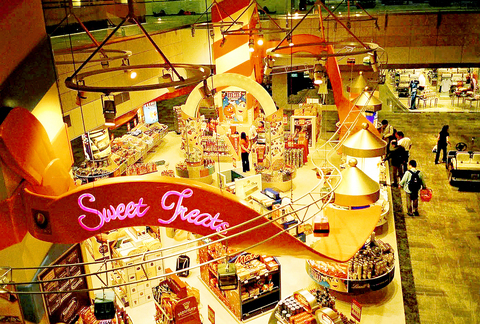
PHOTOS: NY TIMES NEWS SERVICE
Singapore Air Flight 421, originating from Mumbai, India, arrived 10 minutes early on a Wednesday night last month. My bags were checked to my final destination, so I was completely free to roam the airport's two transit terminals. I figured the first thing to do was to indulge. I got a massage.
A female friend had urged me to do the works: back, feet, pedicure, manicure. I wasn't so daring. I wanted just to relax and I didn't have to wait long. Just a four-minute walk from my gate was a corner called The Oasis, which included a massage parlor, My Foot Reflexology.
For the next 45 minutes, Jenny massaged my feet, head, shoulders, and back. I gladly paid US$21 and left feeling like I could float.
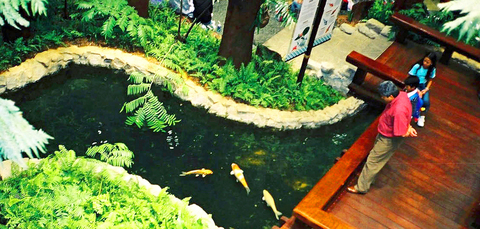
I thought about pulling over for a nap, but I had so much to do: e-mails to check, shopping to do, and the chance for discoveries -- my children would surely want to hear new stories about this airport that had taken on legendary status in their eyes. After 15 minutes of free Internet at one of several clusters of computers (friends from Egypt, Indonesia, India, and the US had sent New Year's greetings), I decided I needed a plan.
Just a few meters away was an information desk. I had already picked up Changi Airport maps, brochures, and a 16-page tabloid called the Changi Express, but it felt like too much information overload.
And so I proceeded to ask a bewildering number of questions of poor Farhana Shaheed, the information officer on duty. Where was the pool? A sporting goods store? Flower gardens? Movie theater? Skytrain that linked Terminals 1 and 2?
"Oh," Shaheed said worriedly, as my questions ended. "You are acting just like an auditor. Sometimes they send people like you around to check on me."
I said not to worry, that I just had time to kill.
"No, I think you are an auditor."
"Well," I said, trying to put her at ease, "if I was, I would give you high marks."
She looked at me uncertainly. Singapore has the reputation of being one of the world's strictest environments in terms of cleanliness and orderliness, where you can be fined for spitting on the sidewalk or for not flushing a public toilet (although infrared sensors in the airport and elsewhere in the tiny country are good backup). I wondered, as she scurried away from her station, whether the airport penalized its information officers for giving wrong answers to tourists.
But Shaheed had directed me well. Within minutes, I was checking out one of the airport's two transit hotels. There I learned I could have a single room with a shower for six hours for US$34.75, or reserve a room with access to a communal shower for US$24.40. The hotel also greeted guests with complimentary tea, soft drinks, or water. I mulled my choices, but the receptionist told me not to bother. "We are booked usually three weeks in advance," she said. "Sorry."
Next door at the Plaza Premium Lounge, supervisor Wendy Lim was more than willing to offer other options. She spotted me looking at a young man and woman in a glass-walled gym, working out on a treadmill and upright bike.
"Sometimes you travel light, don't you?" Lim said, thinking she could read my mind. "And the thought of working out just comes to you. Well, we offer the workout, plus a shower, plus sneakers, plus workout clothes." All, she said, for US$9 an hour.
Before I could say yes, she swept me into the enormous space, which she said could accommodate 100 travelers. It had the feel of an airport business lounge. People rested in overstuffed chairs, some read free newspapers or magazines, others helped themselves to drinks. But Lim ushered me into a private sanctuary.
And she closed the door. Magically, I felt refreshed within seconds.
It was an "oxygen therapy" room, and the air was infused with a lavender scent. I inhaled the rich oxygen deeply, again and again, and my nose and facial muscles felt a coolness. Lim started to leave, but my massaged feet weren't moving. "Oh, just a moment more," I said, closing my eyes.
She laughed, which jarred me to my other senses. I realized if I stayed a moment more, I would stay an hour, and that came with a cost -- US$13.90 for every 20 minutes inside and lost opportunities for exploration. Lim also had more to show me, stopping at a nearby bar in the lounge. She moved aside a bar stool and opened a door in the paneling. It revealed an oxygen tank. This, she said, was no ordinary bar.
It was an oxygen bar.
"When you get off a plane, you yearn for oxygen," Lim said, as I stared at the tank. "All that recycled air you breathe is so bad for you."
Still, I could not imagine pulling up a seat at the bar and asking for an oxygen tank. I could imagine requesting a gin and tonic. Maybe I needed to change my old ways of thinking.
But not now. I thanked her, walked out into the airport terminal air and heard the sounds of a car crash.
Smash! Boom! Then, machine-gun fire, Rat-a-tat-tat!
I hustled toward the noise and around a bend found the movie theater, which had no doors. Commando, starring Arnold Schwarzenegger, was playing. The two dozen seats were full; the overflow audience sat in the aisle.
"Isn't this great?" I asked a mother with two small children as we approached the theater's screaming speakers.
"Yeah, right," she said, looking at me as if I were out of my mind. "It's not very appropriate for kids."
She tugged her children away, dragging her reluctant boy. She may have been right -- but I was alone. So I watched for a while, admiring Arnie's cartoonish biceps and grimaces for 10 minutes or so, until I began to feel sleepy.
Time for fresh air.
Not many airports offer outdoor patios. Fewer still offer outdoor gardens, but Singapore's has fern, cactus, orchid, and sunflower gardens, plus a rain forest area. It has 15 staff gardeners in Terminal 2 alone. Closest to the movie theater was the sunflower garden, and as I opened the door to see it, an eerie scene greeted me.
The sunflowers, illuminated by spotlights, stood out as golden orbs against the night sky. But it was not a spot that would have inspired van Gogh. A jet thundered off the runway below; the noise caused me to cover my ears. Packs of smokers milled around the sunflowers and their clouds of smoke hovered over the flowers.
I left to shop. My two sons had asked for "American candy," which I dutifully found in one of the airport's nine candy stores. My sons and daughter also wanted an iPod, which I bought for US$230, compared with US$300 in New Delhi. But I waltzed past perfumes, diamonds, clothing, mini-stereos, and locally-made, gold-plated orchids (costing up to US$356).
I needed to find the Skytrain, to travel from Terminal 2 to Terminal 1. "The ride takes approximately 89 to 90 seconds," said Shaheed's replacement at the information booth, directing me to the rail car.
"Approximately?" I asked.
"Yes, approximately," she said.
It took 84 seconds, after a four-minute wait.
I ate sushi. I watched MTV with a group of teenagers on one TV set. I watched the Discovery Channel with four-year-olds on another set. I hooked up my laptop to a free Ethernet line next to a 20-year-old Malaysian student who was chatting with his family over his laptop using Skype technology. I poked around the cactus garden that had "do not touch the plants" signs every couple of meters, which of course encouraged me to touch the cephalocereus senilis (old man cactus from Mexico) and the euphorbia splendens (a crown of thorns that come from Madagascar).
And I found the outdoor swimming pool. It was past midnight and closed, but I stumbled upon an unlocked door and climbed the stairs to admire the water shimmering in the night-lights. No one was around, the water seemed so inviting, I bent over to test the temperature. Warm. Should I strip to my boxers and jump in? My children would treasure that story.
I looked at my watch. It was 1:15am. Oops! My flight was leaving in less than an hour from Terminal 2. With regret, I hustled to the Skytrain (two-minute wait, 85-second trip), raced to my gate and arrived with only minutes to spare.
My seven-hour layover had flown by. I was ready for my next seven hours in this airport. I could try oxygen therapy, a workout, a pedicure perhaps and, if my timing was just right, maybe even a forbidden Singapore skinny-dip. Now that would be a layover to remember.
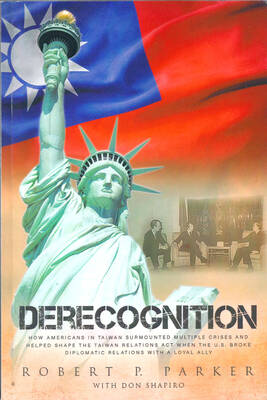
One of the biggest sore spots in Taiwan’s historical friendship with the US came in 1979 when US president Jimmy Carter broke off formal diplomatic relations with Taiwan’s Republic of China (ROC) government so that the US could establish relations with the People’s Republic of China (PRC). Taiwan’s derecognition came purely at China’s insistence, and the US took the deal. Retired American diplomat John Tkacik, who for almost decade surrounding that schism, from 1974 to 1982, worked in embassies in Taipei and Beijing and at the Taiwan Desk in Washington DC, recently argued in the Taipei Times that “President Carter’s derecognition
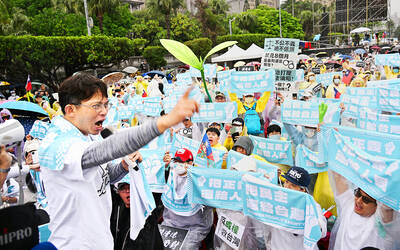
This year will go down in the history books. Taiwan faces enormous turmoil and uncertainty in the coming months. Which political parties are in a good position to handle big changes? All of the main parties are beset with challenges. Taking stock, this column examined the Taiwan People’s Party (TPP) (“Huang Kuo-chang’s choking the life out of the TPP,” May 28, page 12), the Democratic Progressive Party (DPP) (“Challenges amid choppy waters for the DPP,” June 14, page 12) and the Chinese Nationalist Party (KMT) (“KMT struggles to seize opportunities as ‘interesting times’ loom,” June 20, page 11). Times like these can
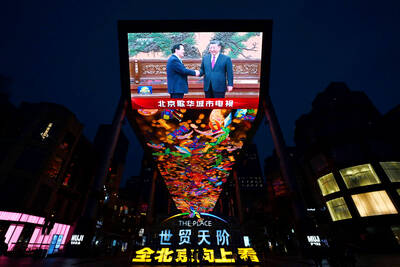
Dr. Y. Tony Yang, Associate Dean of Health Policy and Population Science at George Washington University, argued last week in a piece for the Taipei Times about former president Ma Ying-jeou (馬英九) leading a student delegation to the People’s Republic of China (PRC) that, “The real question is not whether Ma’s visit helps or hurts Taiwan — it is why Taiwan lacks a sophisticated, multi-track approach to one of the most complex geopolitical relationships in the world” (“Ma’s Visit, DPP’s Blind Spot,” June 18, page 8). Yang contends that the Democratic Progressive Party (DPP) has a blind spot: “By treating any
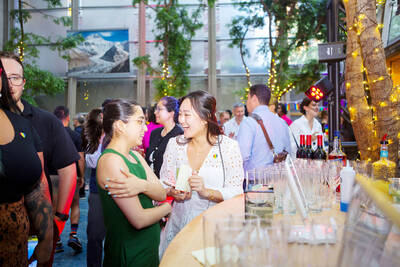
You can tell a lot about a generation from the contents of their cool box: nowadays the barbecue ice bucket is likely to be filled with hard seltzers, non-alcoholic beers and fluorescent BuzzBallz — a particular favorite among Gen Z. Two decades ago, it was WKD, Bacardi Breezers and the odd Smirnoff Ice bobbing in a puddle of melted ice. And while nostalgia may have brought back some alcopops, the new wave of ready-to-drink (RTD) options look and taste noticeably different. It is not just the drinks that have changed, but drinking habits too, driven in part by more health-conscious consumers and